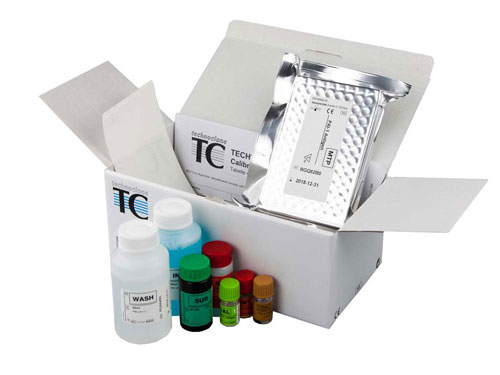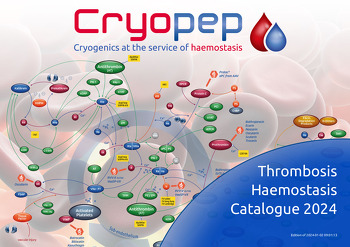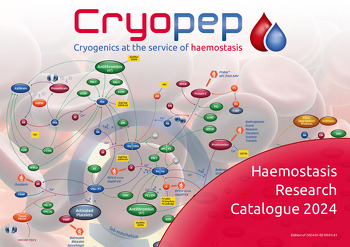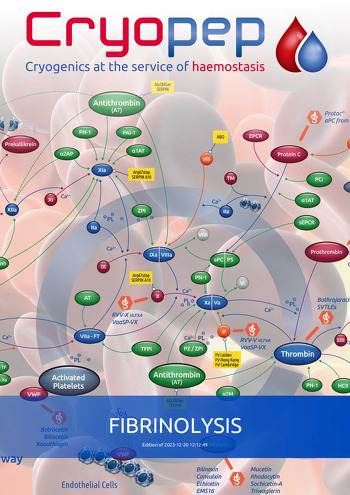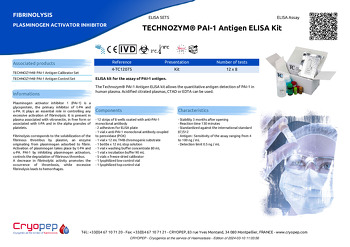Plasminogen activator inhibitor 1 (PAI-1) is a glycoprotein, the primary inhibitor of t-PA and u-PA. It plays an essential role in controlling any excessive activation of fibrinolysis. It is present in plasma associated with vitronectin, in free form or associated with t-PA and in the alpha granules of platelets.
Fibrinolysis corresponds to the solubilization of the fibrinous thrombus by plasmin, an enzyme originating from plasminogen adsorbed to fibrin. Activation of plasminogen takes place by t-PA and u-PA. PAI-1 by inhibiting plasminogen activators, controls the degradation of fibrinous thrombus.
A decrease in fibrinolytic activity promotes the occurrence of thrombosis, while excessive fibrinolysis leads to hemorrhages.
- Stability 3 months after opening
- Reaction time 130 minutes
- Standardized against the international standard 87/512
- Antigen : Sensitivity of the assay ranging from 4 to 100 ng / mL
- Detection limit 0.5 ng / mL
- 12 strips of 8 wells coated with anti-PAI-1 monoclonal antibody
- 2 adhesives for ELISA plate
- 1 vial x anti-PAI-1 monoclonal antibody coupled to peroxidase (POX)
- 1 vial x 12 mL TMB chromogenic substrate
- 1 bottle x 12 mL stop solution
- 1 vial x washing buffer concentrate 80 mL
- 1 vial x incubation buffer 90 mL
- 5 vials x freeze-dried calibrator
- 1 lyophilized low control vial
- 1 lyophilized top control vial







